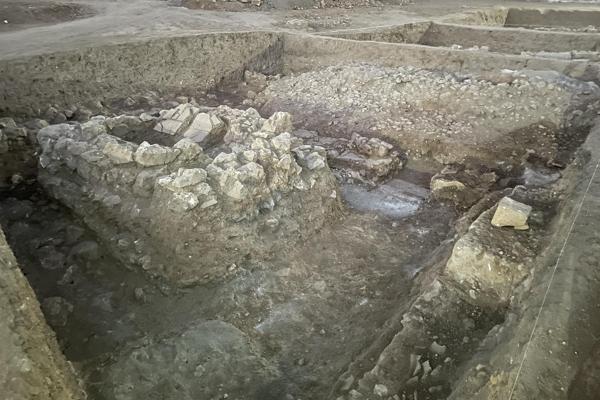Ancient brad oven among findings in Perre
ADIYAMAN


A 1,500-year-old bread oven structure has been discovered during ongoing excavations in the ancient city of Perre, one of the five largest cities of the Kingdom of Commagene.
The excavations have been continuing at intervals since 2001 in the ancient city of Perre, located in the eastern province of Adıyaman. This year’s works also unearthed a historical Roman fountain, large blocky stones, water channels and various architectural structures.
The recent works in an area of 500 square meters next to the wine workshop areas and the necropolis area, nails belonging to the building and the bread oven structure, which was used to meet the bread needs of people living in the ancient city.
Adıyaman Museum Director Mehmet Alkan said that the new findings were dating back to the 5th century A.D.
“Excavations continue next to the necropolis area. We recently found hundreds of nails belonging to the building, which is identified to be 1,500 years old, and the door that fell on its side. It is understood that these nails were used both to connect the door to each other and as a door decoration. Based on the measurements made on the basis of the rows of nails, it is estimated that the door measures approximately 1.80x1.20 meters. In addition, there is a round tandoor structure in the northeast corner of the area,” he said.
Speaking about the bread oven structure, Alkan said, “We made the 18th trench here, and we came across plastered wall structures here. The stones in these wall structures are amorphous stones. During the excavations we made last year, we excavated the industrial wine production sites, and the bread oven structure, made of tiles, next to it was unearthed, probably to meet the bread needs of the people working in this area. Its history dates back to 1,500 years ago.”
Located five kilometers from the city center, between the capital of the Commagene Kingdom, Samosata—modern day Samsat — and Melitene — now Malatya, the ancient city of Perre is famous for its long history as well as the burial caves and cities built into the hills. It was one of the largest cities of the Kingdom of Commagene, dating back to 162 B.C.
It served as a transit place where travelers, caravans and armies rested during their travels.
